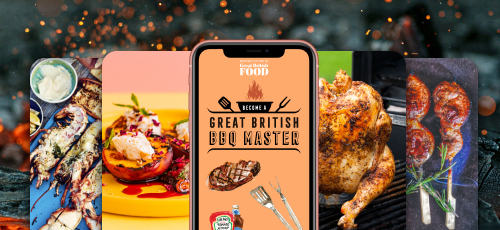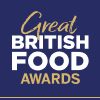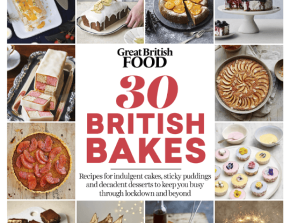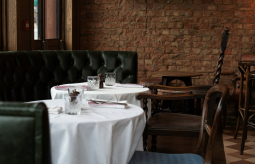







There’s a very slight stress, when sitting to eat for the first time in what everyone agrees is an incredible restaurant, that it’ll meet your expectations. Or perhaps more accurately that you will meet its – and prove a worthy consumer of so much excellence. Bearing three Michelin stars and a reputation as Britain’s best restaurant, L’Enclume has become a phenomenon. In the two decades since it opened, chef patron Simon Rogan has transformed the quaint Cumbrian village of Cartmel into a veritable machine for making people happy. His nearby 12-acre farm supplies the original restaurant, a second one-star location (Rogan & Co) and a separate chef’s table experience (Aulis). Then there are the outposts: one restaurant in nearby Windermere, a chef’s table in London and another in Hong Kong, near the chef’s bakery and its one-starred Roganic restaurant. Back in Cartmel, Simon’s name appears on everything from swanky teabags and umbrellas to his three course meal kits. It’s quite an empire.
God is in the house
But L’Enclume is where it all started. In most excellent restaurants there are clues, even before the first amuse-bouche arrives, about how the next few hours will go. Arriving at L’Enclume you spot hints that the wild genius it takes to create god-tier food is present. It’s in the audaciously lumpy, whitewashed walls of the 13th-century forge that holds the dining tables, and the cavernous wine glasses with such improbably delicate stems you can’t imagine how they journey unscathed through a professional kitchen’s pot wash area. The welcome glass of fizz is a limited release rosé pressed from pinot meunier grapes grown in plot four of Hampshire’s Exton Park and aged on its lees for three years. The cutlery: hand-forged by an artisan blacksmith in Somerset. Items take an hour each to perfect and a teaspoon will set you back at £55 in Simon Rogan’s homeware shop. So you get the picture: L’Enclume is EXTRA.
The restaurant earned its first star from the Michelin Guide in 2005, but for many people it was TV exposure on BBC comedy The Trip, and later Simon’s stint on Great British Menu, that turbo-charged the restaurant’s reputation. A second star came in 2013 and then last year that glorious third – the tip-top honour that puts L’Enclume in an elite club with just 141 others across the whole world.
Simon cites his close-knit team as a big part of the winning formula, and many smiling faces greet me, from the chaps who whisk away my rain-soaked coat to the chef who delivers my first mouthful (a gorgeous morsel of smoked pike perch roe and beetroot within a crisp tart shell). But my favourite guide through the experience is Hannah, a noticeably brilliant waitress whose comfy manner is a welcome counterpoint to the grand proportions of the experience. The very poshest of restaurants can bring out a kind of performative reverence in their staff. Some punters undoubtedly love such theatre, but personally I want to hear how many tea towels the kitchen gets through in a service, and which oven off-cuts are most keenly fought over. Hannah’s grounded manner – honed, I discover, across a string of celebrated dining rooms – belies the skill with which she magics away empty plates or anticipates a colleague’s arrival with an urgent delivery of delicately-poised ingredients.
The magic happens
The 14 dishes that arrive throughout the evening are pure (if not simple) delight: a crisp fritter of marbled Duroc pork and smoked eel rewards careful eaters. Its sweet crumb is formed from crisp shards of puffed shallot; piped yellow dots of fermented sweetcorn purée lift up a grassy lovage cream that holds the fritter to the plate. The next dish is utter heaven. Squidgy little stacks of pressed croissant cooked in a Berkswell cheese custard sit on a warmed ceramic pebble, their sides crisped with a caramelised birch sap and their summit buried in an avalanche of fluffy aged Berkswell shavings. It’s a little like the chef has followed one’s private raids on Sunday roasting pans and Christmas trifles, noting the highlights and bringing them together for a sensory climax that can acceptably be enjoyed in front of a dining room of strangers.
It’s this transcendent experience that wins restaurants like L’Enclume their acclaim, but it’s tough at the top. Noma, Copenhagen’s gastronomic Mecca long hailed as the world’s best restaurant, recently announced its plan to transition into a ‘food lab’ in 2024 as the economics of employing 100 staff to produce 20 courses for 40 guests no longer stack up. It follows the path of Spain’s El Bulli, whose iconic three-star kitchen reined supreme in the global restaurant listings until 2011, when chef Ferran Adrià closed his operation hinting at annual losses of €500,000. Its transition to a ‘museum-lab’ for chefs and other food creatives will complete this summer.
A national treasure
L’Enclume is undoubtedly already a lab of sorts, and a living museum to level of hospitality that’s as rare as it is precious. I hope its operators – the Simon Rogan group – can continue to pull off its daring balancing act, creating exquisite dishes of modern British food in tough economic crosswinds. Ducking into the open kitchen, the calm and focus is striking. I look keenly for hints of the chaos that many of us have experienced in professional kitchens, but the shift of young staff works like clockwork. No dramas. No teetering mountains of burnt pans or spewing tickets.
Back at my table a warmed thumb pot of rough clay arrives, and feeling like the rightful heir of Henry VIII I plunge the prongs of my blackened fork through a canopy of tiny, misted nasturtium leaves. Beneath, slightly cool cubes of raw Cartmel Valley venison are dressed in a minerally coal oil and a mild emulsion of sunflower seed. I pull this delicately assembled creation apart to better taste its components, and find sharp cucumber. “Caramel/gel/jam,” I scribble in my notebook, vainly trying to remember the chef’s description as he handed it over but giving in to the holistic eating experience.
You sense this caving to the experience is what the chef wants. As the forged stainless steel cutlery is swapped for the oiled curves of a wooden spoon, the contrast is so acute it makes me laugh out loud. It’s like a baby spoon in the mouth: thick, warm and tongue-cradling. Perhaps that’s why the soft seaweed custard that accompanies it lasts so long in the memory. Gently set and rich with beefy broth and bone marrow, it’s topped with a generous dollop of caviar aged in Maldon sea salt. Beyond it hides a tenderly poached oyster, and the growing sense that this eating experience is more akin to a night at the opera – or a haute couture collection – than the usual fine dining experience. This restaurant is a national treasure; let’s hope it can sustain.
-
Blog
• one week ago -
Blog
• one month ago -
Blog
• 3 months ago -
Blog
• 4 months ago
-
Review: The Ox in Clapham
one week ago -
Review: Starling, Esher
one month ago









_124_80_s_c1.jpg)



